The beautiful island of Iona is known as the “motherland of dreams”, and once home to a people 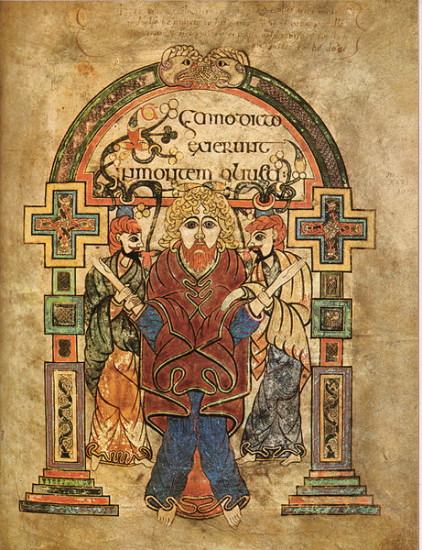 known as the Ionians, and in the Scriptures as the Hebrew Levites who had settled there in approximately the 5th Century A.D. giving their name to the island jewel. It has also been known by the name of Hu-colum-kill (Icolmkill), that is, the island of Columba of the Cell, and Iona’s old Gaelic name was said to be “Innis nan Druidhneach,” which translates as the Island of the Druids.
known as the Ionians, and in the Scriptures as the Hebrew Levites who had settled there in approximately the 5th Century A.D. giving their name to the island jewel. It has also been known by the name of Hu-colum-kill (Icolmkill), that is, the island of Columba of the Cell, and Iona’s old Gaelic name was said to be “Innis nan Druidhneach,” which translates as the Island of the Druids.
The name of the Ionians are for various tribes included in ancient history under the general names of the Phoenicians, Hellenes or the Greeks. They were the followers of the true God symbolized by the dove which in Hebrew is the word Ion, Ionah or Iona (Jon, Jonah or John) and in Greek as Oinas. These words are all taken from the name of Jehovah, and for this reason, they are often known as the Priests of Saint John or Iona. Many of them would have a direct involvement in the writing of both the Old and New Testaments and the formations of early Christianity in the West.
The land where they came to Ireland from was known as Ancient Ionia and Phoenicia. It consisted of the northernmost territories of the Ionian League of Greek settlements that is now the central coastal Anatolia in present-day Turkey. This empire received its name from the Ionian tribe who, in the Archaic Period (600–480 BC), settled mainly the shores and islands of the Aegean Sea now known as the Mediterranean Sea. Herodotus states that in Asia the Ionians kept the division into twelve cities that had prevailed in Ionian lands of the north Peloponnese, their former homeland, which became Achaea after they left.
Many of the wise men educated at the Ionian School of philosophy, and distinct school of art that flourished between 700 and 500 BC, would be part of Ionian migration from Greece to the West. This is when the Ionian Empire first arrived in Ireland approximately in the 8th century BC. These dates I mention correlate exactly with the early Irish Annals and History of Ireland during what is known as the Iron Age which began about 600 BC.
This time period it is well documented that Ireland began to be colonized by who many historians call the Celtic people which in reality we can simply call the Greek Hellenes and Ionians. This gave rise to the emergence of Gaelic or Old Irish culture by the fifth century AD. k It was at this time when we find in the Irish Annals the rise of the Kingdoms of ancient Ireland of In Tuisceart, Airgialla, Ulaid, Mide, Laigin, Mumhain, Cóiced Ol nEchmacht. Like had occured in Anceint Greece during Ionian rule, a rich culture had flourished bringing the light of learning and the arts to Ireland. The society of these kingdoms was dominated by an upper class of aristocrats, warriors and priests we know as Druids.
They traveled to Ireland from far and wide by boat from the Ionian Islands or what we can call the land of Phoenicia such as Crete, Kos (Dia), Rhodes, Cyprus, and included the islands of Chios and Samos. Thier lands were bounded by Aeolia to the north, Lydia to the east and Caria to the south. For this reason, the people who had first discovered Ireland could be called by many names like that of the Phoenicians, Greek Hellenes, Celts and Ionians since it has been found by science that these people are all interrelated with one another over three thousand years of time, travel, conquests and forgotten cousins in far away lands.
Sir Godfrey Higgins had written in his Celtic Druids, “Iona was derived from the God hi Ie, and the On of Egypt; these the Romans Latinized, and thus made the oldest of all their Gods, Janus or Jonas.” He goes on to say that they spoke and wrote in Hebrew and that, “Jon was the same as Baal in Welsh. Jon was the Lord, God, the first Cause. In Basque, Jauna, Jon, Iona, Jain, Janicoa, Jaungoicoa, meant God, Lord, and Master. The Scandinavians called the sun Jon. One of the inscriptions of Gruter shews, that the Trojans adored the same planet by the name of Ionai In Persian the sun is called Jawnah. All these names have a near relation to the Etruscan Janus, who was considered the God supreme—the Deus Deorum.”
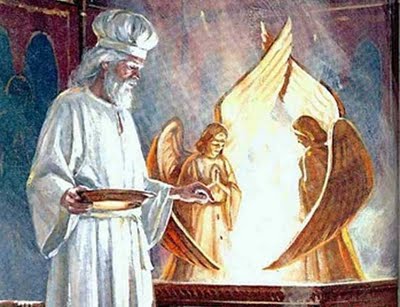 These names we can easily connect to the Phoenicians who also named their priests Cohanim (Kohanim). In the Torah, the priests of Baal are referred to as Cohen or Kohen or plural: Cohanim or Kohanim, which is a Hebrew word for priest or king, and the word Bol-Khan, specifically refers to the priests of Baal. These priests claim direct patrilineal descent from the Biblical Aaron who is often called “‘Aaron the Priest“‘ (אֵהֲרֹן הֵכֹּהֵן) and once Aaron the Levite (אַהֲרֹן הַלֵּוִי) (Exodus 4:14). He who was the older brother of Moses, (Exodus 6:16-20, 7:7; Qur’an 28:34) and a prophetof God, that which we find in Baal which means “Lord and Master.”
These names we can easily connect to the Phoenicians who also named their priests Cohanim (Kohanim). In the Torah, the priests of Baal are referred to as Cohen or Kohen or plural: Cohanim or Kohanim, which is a Hebrew word for priest or king, and the word Bol-Khan, specifically refers to the priests of Baal. These priests claim direct patrilineal descent from the Biblical Aaron who is often called “‘Aaron the Priest“‘ (אֵהֲרֹן הֵכֹּהֵן) and once Aaron the Levite (אַהֲרֹן הַלֵּוִי) (Exodus 4:14). He who was the older brother of Moses, (Exodus 6:16-20, 7:7; Qur’an 28:34) and a prophetof God, that which we find in Baal which means “Lord and Master.”
They were originally descendants of the educated Phoenician Kohanim Levites and Greek Ionians who came from the Mediterranean to Ireland. The Phoenicians had called their priests Bards and this is where the Druid Bard is derived. Some of this history I have discussed in many articles on the ancient Priesthood of Jupiter (Iao) such as the Kohen: The Priest of Baal, and I also briefly of their direct connection to Ireland that I discussed in my last article, “What is the meaning of the name Ireland?”
One of their symbols mentioned above is the Dove and also the symbols of the Harp, Lion of Judah and also the 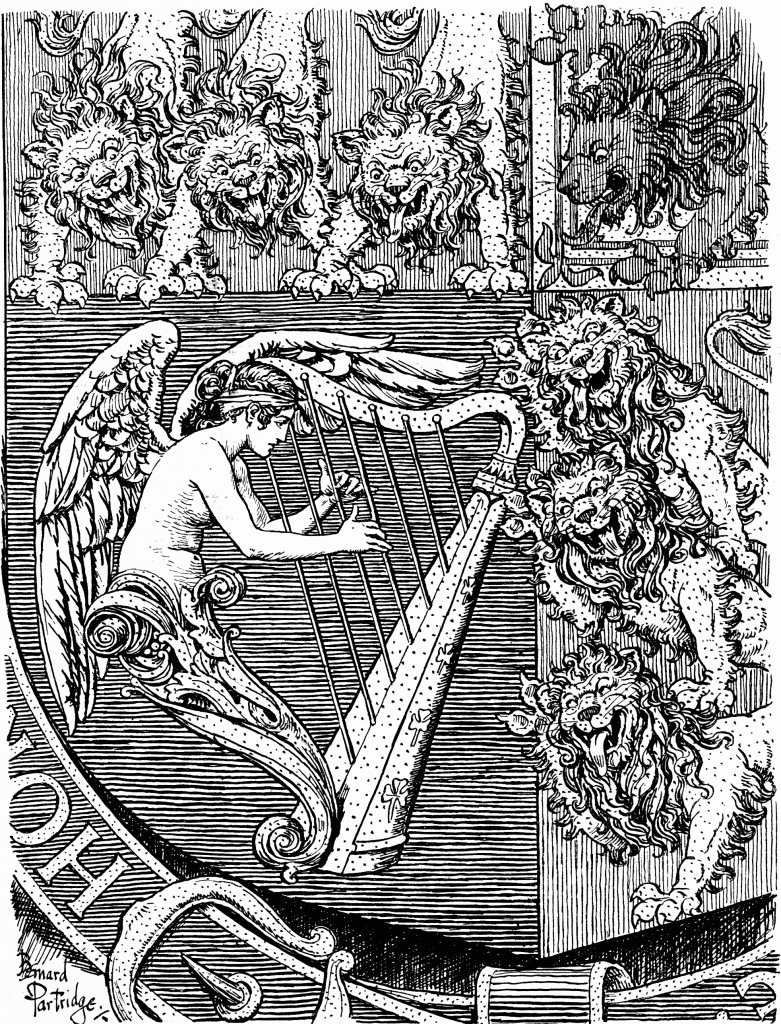 Celtic cross which they had imported into Ireland from the East. All these symbols are thoroughly documented in the East approximately 1000 years before these same said symbols can be found in Ireland and Europe. They also brought with them their religion, Gods, Goddesses, secrets, secret societies along with their Phoenician Hebrew and Greek alphabet that developed and tweaked as the Children of Babylon into a new language that we know today as Old Irish and English.
Celtic cross which they had imported into Ireland from the East. All these symbols are thoroughly documented in the East approximately 1000 years before these same said symbols can be found in Ireland and Europe. They also brought with them their religion, Gods, Goddesses, secrets, secret societies along with their Phoenician Hebrew and Greek alphabet that developed and tweaked as the Children of Babylon into a new language that we know today as Old Irish and English.
Many of these well-educated Ionian priests could write and speak in Greek, Latin and English. They lived for knowledge and it was from this small island that some of the most famous luminaries and Saints in early European, and Church history would hail from Iona. Men like Saint Patrick, Baedan, Columba, Bede, Cuthbert, and Johns Scotus to name a few.
They were a group of the most important wise men in this history of all of Ancient Europe who had a direct hand as some of the first true creators, historians and philosophers of what we know today as Ireland, Scotland, England, Britain, France and Germany. Some were included as the 12 Apostles of Ireland, Saints, Fathers and Doctors of the Church and others became the Father’s of English History like Saint Bede. For this good reason, their Great Work was been held in high esteem by the Church, Roman Emperors and royal elite for thousands of years. They were rewarded handsomely for their service to humanity and Christianity with their own royal house designated as the House of Dunkfeld, in Scottish Gaelic Dùn Chailleann (meaning Fort of the Caledonii or of the Caledonians).
These Ionian priests were also the original Druids whose motto in life was Y Gwir Erbyn Y Byd (“Truth Against the World”). They held nature sacred because they were its students and stewards. The Druids were Servants of Truth who held more power than the kings who ruled by the sword, but took the wise advice from these ancient teachers. It was a symbiotic relation of ruling kingdoms with wise philosophers and the deadly sword to maintain order.
But as time progressed in the 3rd and 4th Centuries A.D., the wars and violence of the times had caused serious divisions amongst the various different families and tribes of Ionians who occupied Ireland, Scotland and Britain at the time. These tribes were known by other names such as the Saxons, Angles, Picts and Normans. These battles are well documented by various historians such as Saint Bede
Some factions of these Druid Tribes who are sometimes referred as the Culdees or Hebrew Chaldees had decided to join their Celtic Church with the Roman in order to bring peace to their lands. Some of the most famous Druids who converted to Christianity at the time were the Saints Columba, Baedan (Baothin), Aiden, Brendin and Patrick. Below there is an extensive list of many of the Gnostic Levite Priests from Iona (Phoenicia) who became attached to the Catholic Church.
Their genealogy is listed in the Bible as the Sons of Queen Baothsheeba, Tribe of Judah with the Levites and Tribe of Benjamin. They are also thoroughly documented as the pedigree of the Irish Royals in the ancient Irish annals of the Phoenicia Farsaidh (or Fenius Farsa: see No. 14, on the “Lineal Descent of the Royal Family,” (Part I., c. iv.). The name Baoth or Baedan is recorded the son of Baoth, son of Magog, son of Japhet, was, according to the Four Masters, the inventor of Letters; he was also the grandfather of Gaodhal, a quo the Gaels, and one of the 12 Apostles of Ireland (also known as Twelve Apostles of Erin, Irish: Dhá Aspal Déag na hÉireann).
Fénius Farsaid (also Phoeniusa, Phenius, Féinius; Farsa, Farsaidh, many variant spellings) is recorded in different versions of Irish folklore as a legendary king of Scythia. He was described as the son of Boath, a son of Magog. Here in the Irish History we have a direct connection to the sons of God from Phoenicia who were the followers of Baoth to the early Irish Royal family of Baothin or Baedan.
According to some traditions, he invented the Ogham alphabet and the Gaelic language. The Lebor Gabála Érenn is mythical account as the descendants of the Scythian prince Fénius Farsaid, one of seventy-two chieftains who built the Tower of Babel. Goídel Glas was the son of Nel (son of Fénius) and Scota (daughter of a Pharaoh of Egypt).
The narrative in the Lebor Gabála Érenn is a fictional account of the origin of the Gaels as the descendants of the Scythian prince Fénius Farsaid, one of seventy-two chieftains who built the Tower of Babel. Goídel Glas was the son of Nel (son of Fénius) and Scota (daughter of a Pharaoh of Egypt). Goídel Glas is credited with the creation of Gaelic (proto-Irish language) from the original seventy-two languages that arose at the time of the confusion of tongues.
This secret history of the Scythian prince named Fénius Farsaid, shows us allegorically that this Scythian prince was clearly a Phoenician since Fénius Farsaid also means Phoeniusa, Phenius, or Phoenician. The name Phenius was also a King of the Phoenician colony of Thrace who was given the gift of prophecy by Zeus (God, Jupiter).
The name of the House of Baedan and Beda becomes mythologically connected to the names the legends of the descendants of Odin or Woden whose descendants can be found in the Genealogy of the Kings from what called the Anglo Saxon of Lyndsey that appeared to survive for only a century. The first chieftains of the Goths (Geats) who were the Jutes during the 5th century, were known as the brothers Hengist and Horsa.
Later a Saxon adventurer by the name of Port, with his two sons, Beda and Megla, landed at Portsmouth, in the year 501 where they killed a British Prince on the spot. Hence, the royal House of Baothen or Beadan under the name of Beda in this story enters Britain to claim their new Kingdoms of Northrumbia and Lyndsey. The same exact people and priests that were in Ireland and Iona now arrive in Britain with their same customs, religions, priests and myths. Not only can we find scientific evidence of these facts left everywhere and in the history books such as that of their kin Saint Beda,m the Father of English History but they also had the same exact names. The coincidences and evidence they have left behind are just too numerous for anyone to deny, or to claim they are not one and the same people.
The mythological genealogy of the House of Baothen or Beadan, Saint Bede traces back to the god Woden; and their followers were the Jutes, or who we can call the Tribe of Judah. This genealogy can now be found today under the Kings of Lindsey, which was also known as Lindisfarne; a small island off the Northumbrian coast (Beda, 3, 17. 4, 12. Sax. Chr. ann. 780. 793), and Halig Ealand, or Holy Island. Benedict Biscop’s grandson Eata became (Beda 4, 13) one of the first bishops of Lindisfarne.
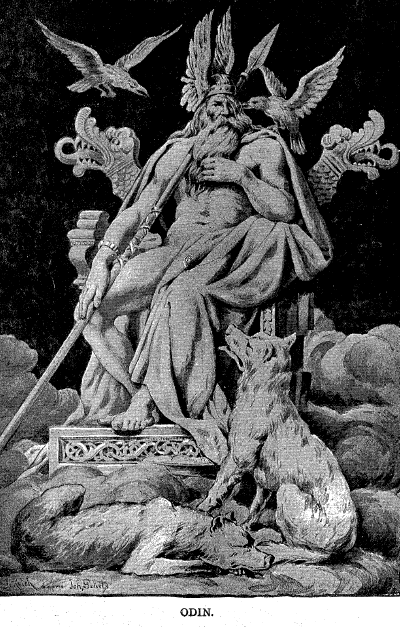 Please note that all these various names I mentioned above and below on the kings list such as King Beda, Woden, and the name Cretta and Cretting which would be a very similar name to the original holy island from which they descend, Crete. Not to mention the name of Beda on the King’s list which can easily be connected to the Irish King Baedan. These names have been left in honor of their ancestors and these stories and myths were created by their descendants to immortalize their Great Work forever in his-story.
Please note that all these various names I mentioned above and below on the kings list such as King Beda, Woden, and the name Cretta and Cretting which would be a very similar name to the original holy island from which they descend, Crete. Not to mention the name of Beda on the King’s list which can easily be connected to the Irish King Baedan. These names have been left in honor of their ancestors and these stories and myths were created by their descendants to immortalize their Great Work forever in his-story.
Here are the Kings of Lindsey,:
GODUNLF GEOTING
FINN GODUNLFING
ERIOTHULF FINNING
FREALAF ERIOTHULFING
WODEN FREALAFING
VINTA WODNING
CRETTA VINTING
CUEDGILS CRETTING
CAEDBAED CUEDGILSING
BUBBA CAEDBAEDSING
BEDA BUBBING
BISCOP BEDDING
EANFERTH BISCOPING
ETTA EANFERTHING
ALDFITH EATTING
These Sons of Baoth spoken about in folklore, we can connect to a real Irish King name Baothan and other spellings such as King Tech- Baoithin, Baithen, Baithin, Baithan, Baetin, Baitan Mor (“Baithen the Great”), which are some of the earlier Latin forms of the King’s name. Later in history when our language had changed over into Old English and Irish, so did the names. At that time, you will find this King called Boythan, Bothan, Bathan, Baeda, Baedan, and Saint Aidan, Aedh-og or Mo-Aedh-og who was Áed mac Ainmuirech high-king of the Northern Uí Néill.
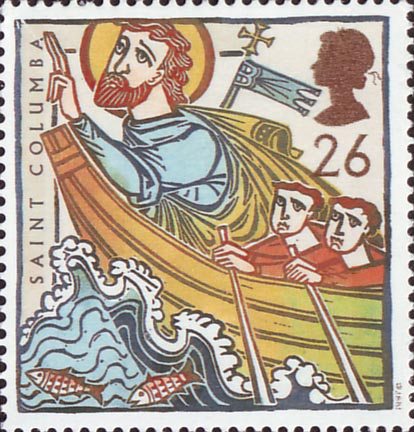 This family line had produced several of the most well known Gnostic luminaries in the early Celtic Church. In the course of history that had went by the name of Baedan or Baithen, son of Brendan, and were the legal successors of Saint Columba as Abbot of Iona.
This family line had produced several of the most well known Gnostic luminaries in the early Celtic Church. In the course of history that had went by the name of Baedan or Baithen, son of Brendan, and were the legal successors of Saint Columba as Abbot of Iona.
It was at this time that Saint Columba had declared “Power by Baedan of the yellow hair will be borne from Ireland on him [the steed].”
0 God, wilt thou not drive off the fog, which envelopes our number,
The host which has deprived us of our livelihood,
The host which proceeds around the cams’!
He is a son of storm who betrays us.
My Druid,—he will not refuse me,—is the Son of God, and may he side with me;
How grandly he bears his course, the steed of Baedan” before the host;
Power by Baedan of the yellow hair will be borne from Ireland on him [the steed].
Baedan was the son of Brendan (Muiredhach), who was grandson of Niall of the Hostages who had married Erca, the beautiful daughter of Loarn, a prince of Scottish Dalriada, and through this union he became the father of the senior line of the Hy-Niall kings. He was the third son of the Monarch, Muircheartach Mor Mac Earca, and became Monarch of Ireland jointly with his nephew, Eochaidh, in the year 566. He was the immediate successor of Saint Columba in the 6th century.
It is said that he ruled Iona for only three years, but had left his 12 sons to take his place upon his death in which the Irish Annalsrecord the death of Baedan MacCoirill, King of Ulster, and a naval expedition in the year 598. St. Adamnan, in recording the death of St. Columba, tells us that the dying words of the Apostle of Iona, as he was transcribing Psalm 53, were: “I must stop here, let Baithéne write what follows”.
Baithéne had been looked on as the most likely successor of St. Columba, and so it happened that on the death of that great apostle, in 596, the monks unanimously confirmed the choice of their founder. Baithéne was in high esteem as a wise counselor, and his advice was sought by many Irish saints, including Saint Fintan Munnu ofTaghmon. Abbey St Bathans in Berwickshire (south east Scotland) may be named after him.
Here is a short list of some of the Saints of Iona from the House of Baedan (Baothin) who took the name of Beadan (Baothin):
* Baedan, son of Muircheartach, joint-king of Ireland, 555, 562, 563.
* Baedan, son of Ninnidh, son of Fearghus Ceannf hoda, slain, 567.
* Baothin – Son of Brendan and the founder of the House of Baedan. – He was also known by the various spellings such as Baedan, Buadan, Baithen called Baitan Mor. He was the legal successor of Saint Columba, died, 595.
* Baedan Mac-Ua-Cormaic, abbot of Cluain-micNois, died, 663.
* Baedan, abbot of Beannchair, died, 665.
* Baedan, bishop of Inis-Bo-finne, died, 711.
* Baedan, of Cluain-tuaisceirt, died, 804.
* Baedan, abbot of Birra, died, 926.
WHAT HAPPENED TO THE PRIESTS OF IONA?
Over time during the rule of the family of the Levite priests of Sons of Baothan or Bedan who were the legal descendants of King Solomon through Queen Baothsheba would help form the true original Catholic Church. These Phoenician/Greek Ionians became who I like to call the Western Celtic-Norman branch of the same Gnostic Ophites or Priests of Jupiter from who originally hail from the islands of Crete, Kos and the surrounding Ionians islands of the Mediterranean.
A people we could say are just the latter descendants of the same race of Phoenicians and Ionians who were the same race of their predecessor being the Celts in the West and that of the Greek Hellenes in the East. They are also related to the Ptolemaic Greek Badais or Roman Badanutha of Pliny of the Siwa Oasis of El-Bieda or El-Bada. The “Prophet” Jacob, was alleged to visited there and also Alexander the Great was crowned there as the Son of God Jupiter-Amon and king of the world.
However, after the 10th Century A.D., the Norman (Northmen) Vikings had taken over much of their land, monasteries and authority by the pure power of the sword. This was the time they went from being Kings to Lords, Dukes, Bishops and priests of the now Norman owned lands. This takeover had created a lot of ill will amongst the Royal Family of Baoth/Baothsheba/Baothin who many of them were simply put to death by the sword for refusing to honor the authority of the Norman Kings.
This time period of the subjugation of the Ionians of the House of Dunkfeld by the Normans and Golden Horde of Genghis Kahn is described well in The Encyclopedia Britannica: Volume 13:
“The island was then inhabited by a Pictish population, but it has been disputed whether Columba obtained the grant of it from Condi, king of Dalriada, or from Brude, kiug of the ricta. Columba was buried in Iona, but between 802 and 807 his remains were transferred from it to the church of St Patrick in the county Down, Ireland. For a long time the monastery of Iona held the supremacy among all the monasteries and churches founded by Columba and his disciples.
It was several times plundered and burned by the Norsemen, and its inmates on more than one occasion put to death.
The Western Isles having come into the possession of Scotland in 1072, the monastery at Iona was rebuilt and endowed by Queen Margaret In 1092 they were, however, ceded to Magnus Barefoot of Norway, who after the renewal of the cession by Edgar in 1097 visited Iona and allowed the people to retain their possessions. The diocese of the Isles, founded about 838, of which Iona was the seat, was united by Magnus to the bishopric of Man, and made subject to the archbishopric of Dronthcim in Norway. A new monastery as well as a nunnery was founded by the Benedictines in 1203, and the Benedictine order cither absorbed or expelled the Celtic community.
About 1507 tho island again became the seat of the bishopric of the Isles. The monastery was demolished in accordance with the Act passed by the Convention of Estates in 1561. For many centuries it was much frequented on account of its facilities for learning, and, as may be supposed, became after the death of Columba a great resort of pilgrims, many of whom came in order to die on the island that their remains might be interred in its sacred soil; while the remains of persons illustrious in rank or in piety were brought to it for burial from all parts of northern Europe.” (2)
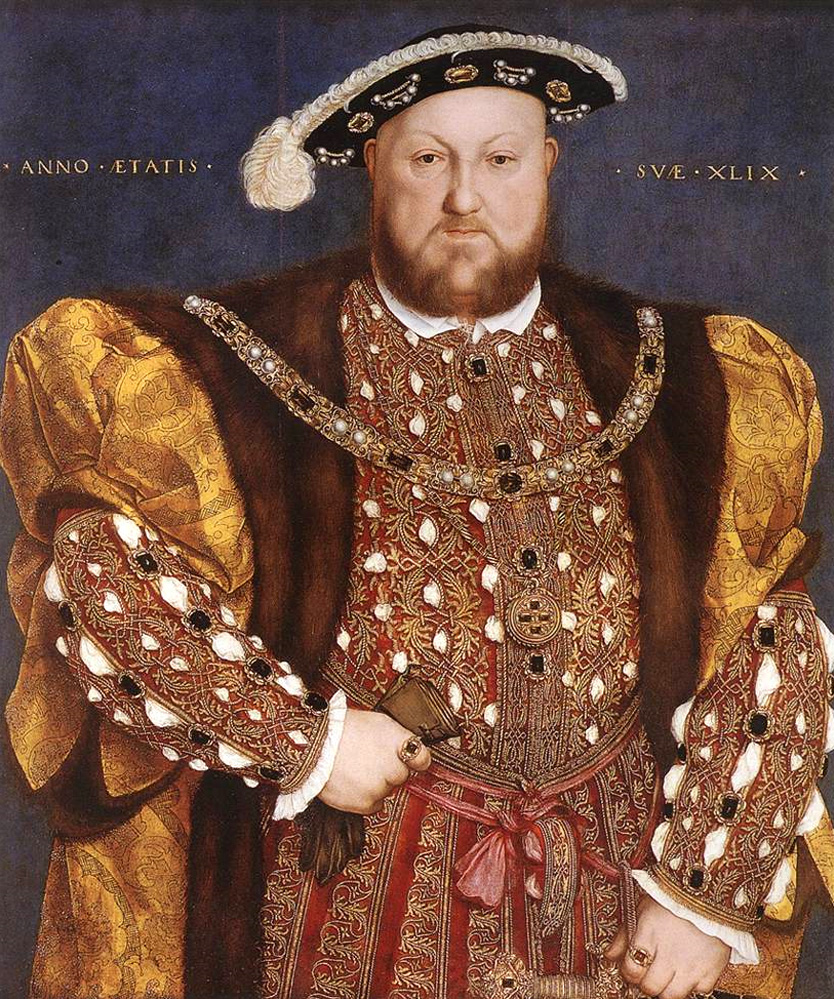 This feud amongst their families had reached a climax during the time of the reign of the Norman King Henry the II to King Henry the VII. It was Henry VIII who is known for his role in the separation of the Church of England from the Roman Catholic Church. His disagreements with the Pope led to his separation of the Church of England from papal authority, with himself, as king, as the Supreme Head of the Church of England and to the Dissolution of the Monasteries. Because his principal dispute was with papal authority, rather than with doctrinal matters, he remained a believer in core Catholic theological teachings despite his excommunication from the Roman Catholic Church. Henry oversaw the legal union of England and Wales with the Laws in Wales Acts 1535 and 1542.
This feud amongst their families had reached a climax during the time of the reign of the Norman King Henry the II to King Henry the VII. It was Henry VIII who is known for his role in the separation of the Church of England from the Roman Catholic Church. His disagreements with the Pope led to his separation of the Church of England from papal authority, with himself, as king, as the Supreme Head of the Church of England and to the Dissolution of the Monasteries. Because his principal dispute was with papal authority, rather than with doctrinal matters, he remained a believer in core Catholic theological teachings despite his excommunication from the Roman Catholic Church. Henry oversaw the legal union of England and Wales with the Laws in Wales Acts 1535 and 1542.
Ireland was considered a Catholic Kingdom under Papal dominion until in 1541 Henry asserted England’s claim to the Kingdom of Ireland free from the Papal overlordship. What King Henry VII did was essential try to erase well over 2,000 years of history and hard work by the family of Baothsheba who was known in the West as the Baoths, Baothen, Baedans, Bedas and now my name, Bedard.
The King did this simply by destroying and or taking over all the monasteries they owned, their ancient records, legal contracts, ancient books, and even changed their names and the meaning of their names in the books to curse their family name. For example, today the meaning was changed in Old English, the word bao or baoth (Iao or Ildabaoth) is now used to identify worms or maggots such as in the words “Baoitheag which is a species of worm, and “baoihsmuan” which means maggot of foolish thought.
My French last name today, Bedard is actually derived from Baoth being that of the Old English-Irish Baothán, Báethán or Baedan. This name Bedan can be found all over the world and especially in Ireland, Scotland, and Britain during the early reign of the Kings of Ulster in the 1st through 15th centuries.
Here is a list of some of the 1,500 years of Priests of Saint John in Iona, Scotland who had faithfully served the Brotherhood and eventually their rites and complete history were wiped out by one King named Henry VIII during the reformation.
1. Columba founded the famous Monastery about A.d. 565. – He had his chief residence here for thirty-four years, during which he visited various parts of Ireland, Scotland, and the Isles. He founded many Churches and Monasteries, all which appear to have been in some degree dependent on Iona. Here he Inaugurated Aidan, King of the Scots. He Died within his Cathedral at Iona, at midnight, before the High Altar, about 597, in his 77th year.
2. Cojun, or Baithen, the son of Brendin – one of the twelve who accompanied Columba from Ireland, succeeded him, and Died about 600, aged 66—twelve months after his master.
3. Laisren, son of Feredach, at one time President of the Abbey of Durrow, Died in 605.
4. Fergua, or Virgnous, Died about 620.
5. Segenius, who founded a Church in the Island of Rechrain about 685. He Died in 651.—Aidan, Bishop and Monk of Iona, about the same time, 685, at the request of King Oswald, of Northumberland, was sent thither to instruct his subjects.
6. Suibne I. (pronounced Sween), Died in 657. In 652, Finan, a Scot, was made Bishop of Lindisfarne, and was succeeded by
7. Colman, a Monk of Iona, who, having maintained the Scotch side of the Controversy about the keeping of Easter, and being worsted, returned in 664 to Iona, and went thence to Ireland, where he founded the Monastery of Mayeo.
8. Cumaine Ailbe, or Cumin The Fair, Biographer of Columba, Died in 668 or 669.
9. Failbe, or Falbeus, about 678, sailed to Ireland, and lived for some years there as a Hermit; after which he returned to Iona, and Died there in 679.
10. Adomnan, Born about 620. In 692, he went to Ireland to visit the Columbite Monasteries, and succeeded in bringing nearly all who were not under the Rule of Iona to observe Easter according to the Roman practice. In 696 or 697, he returned from Ireland, and again made an unsuccessful attempt to alter the observance of Easter at IcolmMll. He Died in 703 or 704.
Conamhail succeeded (?) [M’lMiichlan’s Early Scottish Church.]
11. Duncha held the Primacy of Iona in 707.
12. Conan, the son of Failbe (ninth Abbot), Died in 708 or 709. In 710 or 712, Ceode or Coeddi, Bishop of Iona, Died.
18. Dorbetn, called ” The Long,” was appointed Abbot of Iona about 718, and Died after having ruled only five months.
14. Dunchad, or Duncan, the son of Cuidfaeladh, was Abbot of Iona in 716. He Died in 716 or 717.
15. Faelchu, the son of Dorbein, appears to have been appointed Abbot before the death of Dunchad. He Died in 724.
16. Cii-lean, or Cellenius, or Killen, called “The Long,” was Abbot in 724. He Died in 726.—In 727, the Relies of Adomnan were Translated to Ireland, and in 780 they were brought back again. In 744, there occurred a great storm, in which a great number of the Community of Iona perished.
17. Droichteach, or ” The Bridgemaker,” so surnamed: his name was Cillean, the same as above. He was Abbot and “Anchorite of Iona.” He Died in 752.
18. Fatlbhe, or Feidlmn, Abbot of Iona, Died in 754 or 755.
19. Sleirine, or Sleben, Abbot of Iona, went into Ireland in 754. In 757 he promulgated there the Law of Columba; in 758 he returned to Iona; and about 766 he Died.—In 758, Donald, the son of Diarmid, King of Ireland, Died, and was Buried at Iona.
20. Niall, surnamed Pluviosus, the son of Fergal, after reigning* seven years, sojourned in Icolmkill, became a Monk of Iona, and Died here in 780.
21. Sdtbne H., Abbot of Iona, Died in 772.
22. Muiredhach, the son of Uarghaile, who is styled by the Annalists “Prior of Ia-coluimcille,” Died in 777.—In the same year, Artghal M’Cathail, King of Connaught, went as a Pilgrim to Iona, and Died in 791.
28. Bresal, the son of Segenius, was Abbot about thirty years.
24. Condachtach, styled ” Scriba Optimus,” ruled for a very short time. —About 801 Iona was burned by foreign (Norse) Pirates. In 806 it was again laid waste by Pirates, when sixty-eight of the Inmates, Lay and Clerical, were killed, and, apparently, sixty-four left alive. In the same year a new Town was built at Icolmkill.
25. Ceaulach, the son of Congal, Abbot of Iona, having finished the Church of Cenindsa [Kells in Ireland], Resigned his Office, and Diarmid, an Alumnus of Derry, was Ordained in his stead. He Died in 814.—la 828, Blathmac M’Flaiun (probably an Ecclesiastic), obtained the Crown of Martyrdom, having been butchered by Foreigners at Iona.
26. Diarmid (probably an Irish Abbot), in 828, carried the Belies of Columba into Scotland, and in 880 he removed them into Ireland. This removal was partial, as about 848 Abbot
27. Inrechtach, of Iona, carried them again to Ireland. He is said to have been killed by the Saxons on his way to Rome, on the 12th March, 854. He was the last Abbot of Iona who held the Primacy of the Scottish Church.
28. Cellach, the son of Alidus, Abbot of Iona and Kildare [Cilledara], Died in 868.—In 875 or 877, the Shrine and Eelies of Columba were removed to Ireland, to escape the invaders.
29. Feradach M’cormaic, Abbot of Iona, Died in 877 or 879.
80. Flaun M’maledutn, another Abbot, Died in 890 or 891.
81. Maelbrigid I., Abbot of Armagh and of Iona, Died in 927.
82. Aongas M’muircekt, a wise man, an Anchorite, and ” Tanaisi” of
the Abbot of Iona, Died in 985.
84. Caonconichrao Died in 945.
85. Robhabtach Died in 954.
86. Duibdutn Died in 959.
87. Finghin, an Anchorite, Bishop of Iona, Died in 966.
88. Fiachra, “Prepositus” (in Gaelic Air), of Iona, Died in 977.
88. Dubtach Died in 988.
89. Muoron, ” Comharb” of Columcille, in Scotland and Ireland, Died in 979.—In 985, on Christmas Eve, Iona was laid waste by the Danes, who slew the Abbot and fifteen of the Monks. In 986, 860 of these Danes were slain (say the Irish Annalists) by a miracle of God and of Cholainchillc.
40. Maelciarin, murdered by the Danes of Dublin in 986.
41. Dunchad Died in 989.
42. Dubdalethe, Abbot of Armagh, was chosen Superior of the Columbites, by consent of the Order both in Ireland and in Scotland. He held the Office till his death in 996.
43. Maelriugid II. succeeded. He Died in 1005.
44. Mubedach, son of Crican, succeeded. He Eesigned Office in 1007, and Died in 1011.
45. Flanobra Died in 1025.
46. Maonia O’uachtan (styled “Ferleighinn Cenaansa, Praelector Cellensis”), in 1084, was drowned in going from Scotland to Ireland, along with the Books (another Authority says the Bed) of Columba, three relics of St. Patrick, and thirty men.
47. Maijbore, Abbot of Iona from 1025 till 1040.
48. Eobharbach, Abbot of Iona from 1040 till 1057.
49. Gillecrist O’maoldor, Comharb of Colaimcille in Scotland and Ireland, Died in 1062.
50. The Abbot of Iona, called the son of M’Baeten, was killed by the son of Indabar O’Maoldor in 1069. Another authority says the “grandson of Baetein” was killed in 1070.
51. Dunchad Mac Mic Maonach, “son of the Monk’s son,” Died in 1099.
Great changes came over Iona next Century.
In 1174, Maol Patrick O’banan, Bishop of Conor and Down, a venerable man, full of sanctity, meekness, and purity of heart, Died in Hy of Columkille, at a good old age.
In 1175, Flaherty O’bbolcan, to whom the Abbacy of Iona was offered in 1164, Died at the Black Abbey Church of Deny.
In 1188, Awlave O’daighre Died in Iona while on a Pilgrimage there.
In 1199, Saint Maurice O’baodatn Died in Hy.
La 1208, a Church or Monastery was erected in the centre of the Island, in opposition to the Ecclesiastical Laws and to the wishes of the Inhabitants, by an individual named Ceallach, who is farther stated to have done great damage to the Town; but the Bishops of Tyrone and Tyrconnel, the Abbot of Derry, and other Irish Ecclesiastics, with many of the people of Derry, went to Iona and took down the Church, after which
52. Amhalgaidh O’firgatl was Elected Abbot by the Suffrages of the Scots and Irish in 1208.
55. Donald, Lord of the Isles, who in 1411 fought at Harlaw, and who Died about 1420, is said to have presented Vessels of Gold and Silver to Columkill for the Monastery, and to have become a Monk of Iona.
57. John Mackinnon, Abbot of Y, appears to have been the same as John, Bishop of the Isles, in whose favour the Abbey was soon afterwards annexed to the Bishoprick. His Tomb (of which the following is a representation), is placed on the North side of the Altar of the Cathedral, and has this Inscription round the margin—” Hie jacet Johannes MacFingone, Abbas de Hy, que obiit anno domini mUlesimo quingentesimo, cujus aninux propitietur Deus altissimus. Amen.”—” Here lies John Mackinnon, Abbot of Iona, who Died in the year of our Lord 1500, to whose soul may the most high God be merciful.”—Within S. Oran’s Chapel, lies the lower part of this Abbot’s Cross, Date 1489.
On the South side of the Chancel of the Cathedral, is the Tomb of another Abbot, Kenneth Mackenzie; but at what time he ruled the Abbey is not known.
58. Simon, Bishop of the Isles, appears to have been also Abbot of Iona in 1226. He was present at the settlement of a dispute with the Bishop of Moray about the Church of Kincardyn, in Strathspey.
64. Finlay, Elected Abbot of Y, received Episcopal Confirmation from his Ordinary, “William Sinclair, Bishop of Dunkeld, between 1806 and 1829.
66. The Abbot of the Island of Iona, in 1481, did Obeisance to Robert of Cardeny, Bishop of Dunkeld, his Ordinary.—In 1460, Pope Pius V. proposed to visit the Monastic Library at Iona, to verify some of the Classics.— The Abbey of Iona was for Centuries included in the Diocese of Dunkeld.
VALUATION O7 THE ABBEY OF IONA.
Money—£844 8s 8d. (3)
SOURCES:
2. The Encyclopaedia Britannica: latest edition. A dictionary of …, Volume 13
3. Monasticon: an account (based on Spottiswoode’s) of all the abbeys …, Volume 1 By James Frederick Skinner Gordon, John Spotiswood
4. Linked to in yellow
5. Other open source

Moe is the founder of GnosticWarrior.com. He is a father, husband, author, martial arts black belt, and an expert in Gnosticism, the occult, and esotericism.

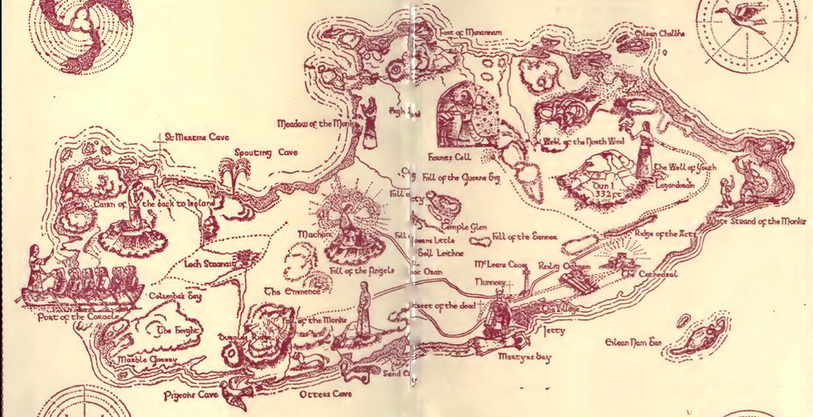

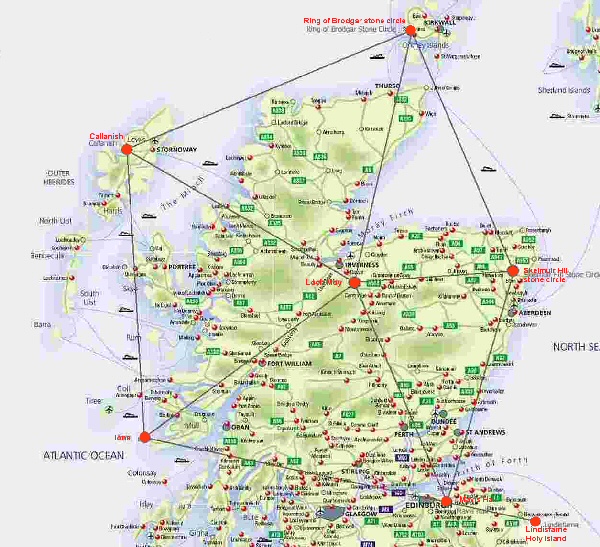
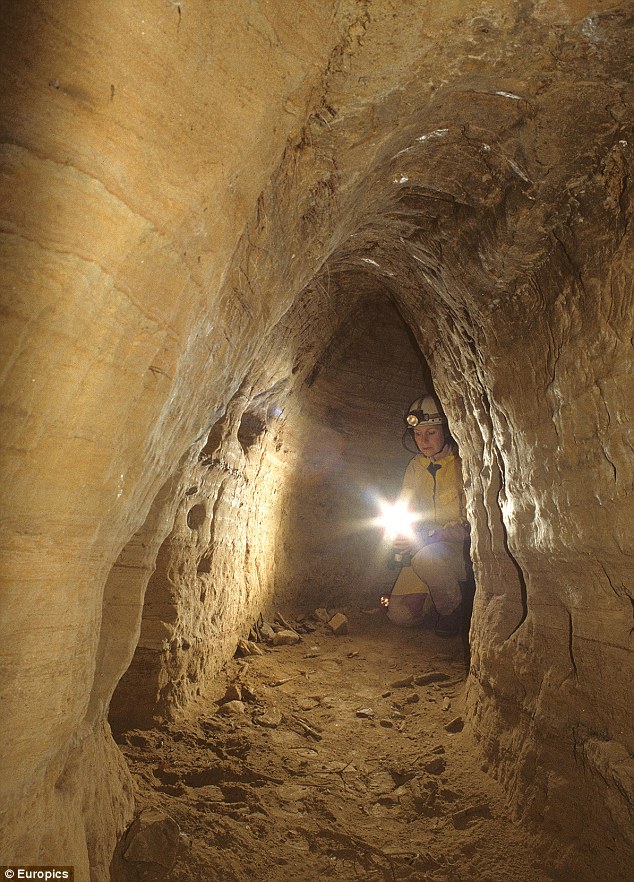
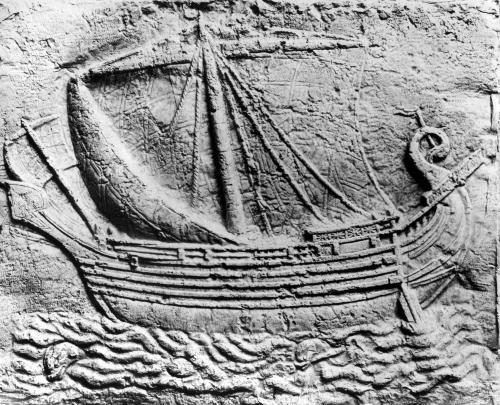
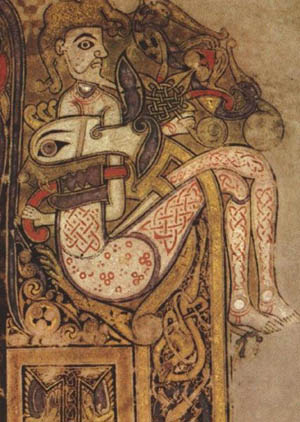
Chicken!
You must be mistaken. I’m rite here and have been all along. My work, research and truths outshines yours a million to one for Truth is the deadly enemy of lies and black magic. Your pathetic works of darkness supported by nonsense and unreasonable lies will not stand against three thousands years of Great Work in which I’m documenting rite here.
Any day and anytime you, the Tsar of lies being that of Mikael Tsarion and any of your lying cronies would like to have a formal debate about the history of my ancestors and family whose teachings you wish to steal and profane, you know where to find me. You all are like lil spiritual children to me who think they know the secret mysteries by playing steal the Brotherhood lunch money from the true Rep of the Original Brotherhood who can clearly beat all your asses with his eyes closed and brain operating at 1% capacity. This is just with my words and work.
My bet is that you ALL of you are weak cowards and cockroaches who will hide when the light is shone on your lies and pathetic souls like I’m doing now. You will never take me up on an offer of a debate because you will lose and you all know this. A debate with me would prove that you are ALL liars and misleading every idiot on Youtube and Facebook who doesn’t do their own research.
Hence, who is the real chicken here? I would safely say that it is you all who will be poison dust dust in the winds of lying time that will be covered by the own sand of your pathetic life’s work of lies.
PS – If I were you all, I would rethink your strategy because by the time I’m done, your work won’t have a leg to stand on and it will be just all your liars supporting one another doing the circle jerk.
Moe, please… get some help.
Why do you say that because I defend truth and my ancestors against liars like you?
No…it’s because I think you’re a psychopath who needs medical help. You must be really unsure of yourself to attack my reputation and research without even knowing what it is or what I have to say… so, sayonara, brother, hope it all works out for you.
As I said, you cannot defend your work and you cannot debate me because it is based on lies and nonsense. That is why you come on my blog and all you can do is call me names. That is just so childish of you. I stand by my work and will debate you or Tsarion any day of the week.
I don’t need to defend what you don’t understand and I really have no idea what your work is about… but you really need to avoid getting nailed to a tree this time around, eh? Now fuck off you arrogant twatt.